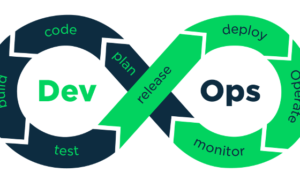The transformative impact of remote learning has etched its presence across the educational landscape, especially in the rural corners of the United States. In the aftermath of the COVID-19 pandemic, what began as a response to unprecedented circumstances has evolved into a preferred mode of education. Even as the pandemic wanes, the resilience of remote learning persists, primarily fueled by its unmatched convenience and positive influence on the daily lives of students.
The Nexus of Connectivity: Remote Learning and High-Speed Internet
At the heart of effective remote learning lies the necessity for a robust internet connection. In rural areas, where the digital frontier meets geographical challenges, understanding the spectrum of connectivity options becomes paramount. From DSL to satellite and fixed wireless internet, including reliable and high-speed Frontier Internet plans, each option unveils a unique tapestry of benefits and considerations.
Satellite Internet: Bridging the Rural Connectivity Gap
Satellite internet emerges as the stalwart, providing a lifeline to remote areas. With a satellite dish serving as the conduit for data transmission to and from space satellites, it offers a vital link to the digital world. Despite its prevalence, satellite internet is not without its challenges, notably its susceptibility to weather conditions, requiring clear skies for optimal performance.
Speed and Reliability
Satellite internet, with speeds ranging from 25 Mbps to 1 Gbps, furnishes ample bandwidth for a spectrum of online activities. Despite its reliability and affordability, users must remain cognizant of potential drawbacks, including latency and data caps.
Pros and Cons
Pros:
- Ubiquitous availability in most rural and underserved areas
- Competitive speeds, often rivalling cable and DSL alternatives
- General reliability, especially in remote locations
- Affordability, surpassing other broadband options in rural settings
Cons:
- Higher latency compared to cable and DSL
- Potential data caps, leading to additional charges
- Susceptibility to adverse weather conditions
DSL Internet: Harnessing Existing Infrastructure
DSL internet, leveraging pre-existing phone lines, secures its place as the second most common option in rural areas. While slightly slower than cable and fiber-optic counterparts, DSL offers an affordable and straightforward setup.
Speed and Limitations
DSL internet speed is contingent on factors like distance from the central office and the DSL service type. Asymmetric Digital Subscriber Line (ADSL) prioritizes download speeds, while Symmetric Digital Subscriber Line (SDSL) ensures parity between upload and download speeds. However, as distance increases, DSL speed experiences a proportional reduction.
Fixed Wireless Internet: A Reliability Paradigm
Fixed wireless internet, traversing through the medium of radio waves, introduces an alternative paradigm. Connecting an antenna to a wireless internet service provider (WISP), it often outperforms satellite internet and boasts wide availability in rural areas.
Connectivity and Speed
Fixed wireless internet speeds, spanning from 25 Mbps to 1 Gbps, position it as a reliable choice for diverse online activities. The technology involves a small exterior antenna linked to an interior receiver unit, guaranteeing seamless internet access.
Augmenting Rural Internet Speed: Proactive Measures for Enhanced Connectivity
To optimize the rural internet experience, users can adopt a proactive stance. Ensuring the router’s optimal placement, regularly updating its software, and exploring advanced solutions like mesh networks or Wi-Fi extenders can significantly enhance connectivity. A strategic approach to managing the simultaneous connection of devices further contributes to a smoother online experience.
A Holistic Perspective: Beyond Connectivity, Exploring Educational Horizons
As we delve into the nuances of rural internet connectivity, it’s imperative to acknowledge that education extends beyond mere connectivity. While satellite, DSL, and fixed wireless internet remain prevalent in rural areas, the prospect of cable internet should not be overlooked. A meticulous exploration of available providers is essential before committing to a specific rural internet type. By understanding the diverse options and implementing optimization strategies, remote learners can unlock the full potential of online education even in the remotest locations.
In conclusion
The marriage of remote learning and high-speed internet has not only weathered the storm of the COVID-19 pandemic but has emerged as a steadfast companion in the educational journey. The resilience of remote learning in rural areas lies not only in the accessibility of varied connectivity options but in the strategic utilization and enhancement of these options. Through an informed and proactive approach, students in rural areas can not only bridge the digital divide but also thrive in the limitless possibilities offered by remote education. Additionally, incorporating reliable and efficient Frontier phone services further strengthens the communication infrastructure, ensuring seamless connectivity for a holistic remote learning experience.

































